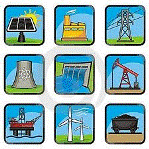Department of Agricultural Economics: Undergraduate Research

Op-Eds from ENSC230 Energy and the Environment: Economics and Policies
Date of this Version
Fall 12-18-2018
Document Type
Editorial
Citation
Op-ed from ENSC 230. Energy and the Environment: Economics and Policy, University of Nebraska-Lincoln, Department of Agricultural Economics, Fall 2018
Abstract
The United States has an untapped energy goldmine: our shores. According to the National Oceanic and Atmospheric Administration (NOAA), the United States his home to over 95,000 miles of shoreline. This shoreline is home to beaches, homes, and wildlife, but it could be home to more: wave energy.
Wave energy comes in many forms: some use the bobbing up and down motion of waves to generate energy in a similar motion of a piston; others store water during high tide and then release it during low tide like a dam. All said and done, the United States has the ability to produce over 1,000 Terra-Watt hours of energy out of the 4,000 Terra-Watt hours it uses every year from waves and tides.
So why isn’t the United States focusing on wave energy? Why do we continue to subsidize draining a limited fossil fuel reservoir when we could be funding a clean, domestic form of energy? Why do President Trump and the Republican party not see value in increasing the potential for more domestic, clean energy sources?
On Donald Trump’s campaign website, he says he wants to “Establish[] American Energy Dominance.” President Trump claims that he wants to put America at the top of the world’s energy market, but he is focusing his policies toward the only US Energy sectors that are limiting: fossil fuels. If the President wants to establish American Energy Dominance, he should be investing way more than the $12 million from 2017 on the research of wave energy technology.
If Mr. President truly wants to make domestic energy dominate, he would focus on jobs that come from long-lasting energy sources that are less taxed and can be more abundant. By focusing on wave energy, the United States could be the leader in an entire subset of the energy spectrum. American engineers could lead the research for more efficient energy modules. American manufacturers could be the main producer of wave energy systems and the batteries that store the energy.
Some people avoid new technology like wave energy because its appearance and because of high costs associated with making the change. Large scale coal power plants produce electricity at 2.6 cents/kWh. According to the ocean energy council, wave generators in the UK produce electricity at 7.5 cents/kWh.
The Ocean Energy Council is confident that with improvements to the technology, wave energy can be produced at 4.5 cents/kWh. That’s the same cost as producing electricity with wind turbines, which are heavily used in the western United States. In 2010 at the 3rd International Conference on Ocean Energy, experts predicted that wave energy can be competitive with fossil fuel-generated electricity by 2030.
But wind energy fails where wave energy does not: land use. Wave energy has the potential to produce electricity at the same price as wind, but while taking up 1/200th the land area. Wind turbines need to be placed farther apart than wave energy. These generators can be placed far enough away from the shore so they aren’t an eyesore. As long as the ocean floor isn’t deeper than 20 meters from the surface, electricity can be generated with waves.
Wave energy is good for America. Wave energy is good for domestic jobs. It’s good for the health of the environment.
Included in
Environmental Indicators and Impact Assessment Commons, Natural Resources and Conservation Commons, Oil, Gas, and Energy Commons


Comments
Copyright 2018, Chris Sukstorf. Used by permission